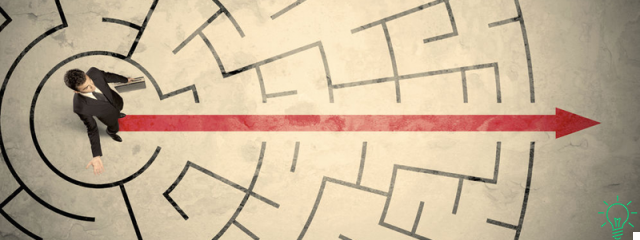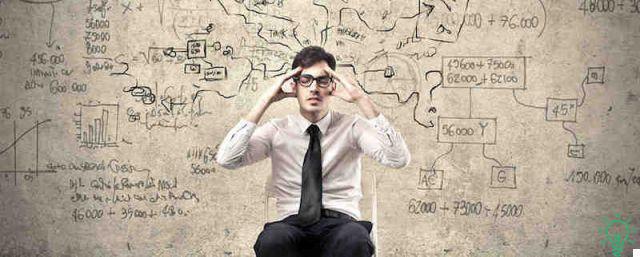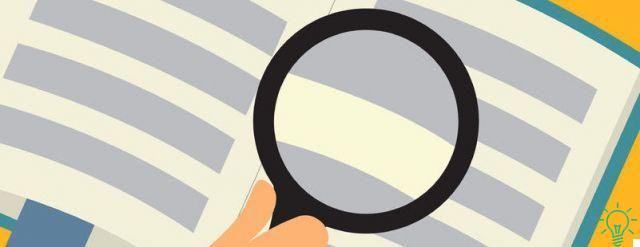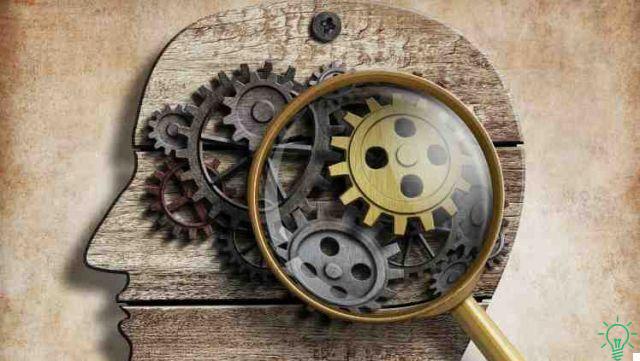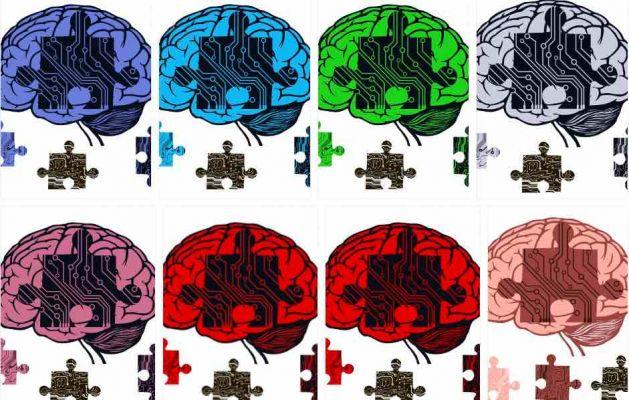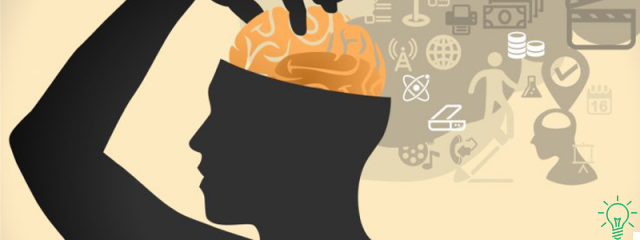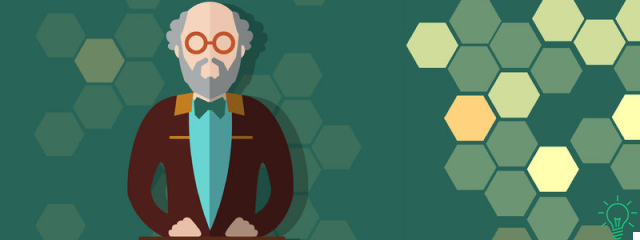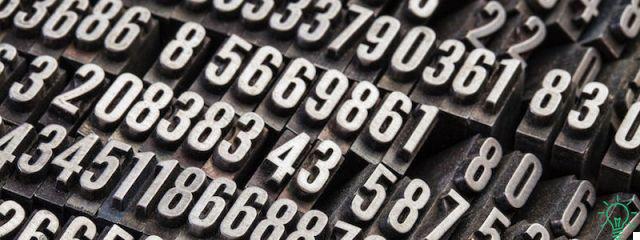
Phonetic conversion is perhaps the most amazing example of how, with memory techniques, it is possible to carry out certain types of memorization with almost supernatural speed and precision.
For this reason, those who learn phonetic conversion often not only derive a practical utility from it, but completely change their mindset.
In fact, he finds himself holding an instrument that is tangible proof of how, with the right strategy and exercise, you can significantly improve your mental performance.
All the more so for the fact that phonetic conversion improves performance in an area, that of memorizing numbers, which is difficult for everyone.
Precisely for this reason, before delving into it what phonetic conversion is and how does it work, we will briefly see why numbers are so difficult to remember, in order to understand the mechanisms underlying memory and therefore the ways to improve it.
Because remembering numbers is difficult
Remembering numbers is one of those activities that accompanies us, even stressing us a little, since we are children.
It starts in elementary school and then continues for the entire course of study, extricating itself in the difficult and long memorization of:
- Historical dates
- Geographical data
- Articles of the legal codes
- Chemical / physical constants
- Biographical dates
- Pharmacological dosages….
And so on depending on the type of study path attended.
But even outside the school desks, the numbers to remember besiege us: PIN, password, telephone numbers, license plates, security codes….
All stuff that we diligently write here and there to be able to remember it, hoping never to lose the precious sheets or files that collect it.
But why are numbers so difficult to remember in mind?
Well, simply because they represent the quintessence of abstraction. What's more theoretical, abstract, difficult to codify than numbers?
While our brains are well-programmed enough to remember images, colors, smells, it is not at all well-programmed to remember something as impalpable and artificial as a number.
To do this, he needs to transform it.
But in the meantime, let's do a little test to see how you do.
Number memorization test
Look at the following sequence of digits:
7 3 9 1 4 9 4 1 1 5
And try to remember it by reading it even two or three times.
It's not easy. Perhaps immediately after reading it you are able to repeat it all exactly, or at least in part ..
Ma if you don't even think about it for 10 seconds it becomes almost impossible to remember it precisely.
It is in fact a sequence of numbers which, for our brain, is completely abstract, that is, it carries neither meaning nor experience.
So, without repeating it many times, it is impossible to transfer it from short-term to long-term memory.
And in any case, even after several repetitions, it risks becoming attached to our long-term memory in a fleeting way, and being forgotten within a few days.
Now try to remember the words “LAPTOP”. Not only is it very easy, but surely even if you don't think about it for half an hour you will still be able to recall them.
Well, what you are about to learn to do with the phonetic conversion system is to transform abstract numbers like 7 3 9 1 4 9 4 1 1 5 into words that are easy to remember. Like for example “LAPTOP COMPUTER” !.
In this way you will make the most of the transfer of data from short-term to long-term memory, which is the basis of memory techniques.
The phonetic conversion table
The phonetic conversion technique is simply brilliant: each number from 0 to 9 is matched with a consonant sound.
The Audaci Della Memoria method provides for the conversion according to the following table (which is the most used of all, it's not that I invented it):
1 T, D
2 N,GN
3 M
4 R
5 L, GL
6 C, G sweets
7 CH, GH, K gutturali
8 F,V
9 P, B
0 S, SC, Z
Note that the various consonant sounds are grouped on each number in a homogeneous way from a phonetic point of view: on the 1 there are the T and the D, which are the dentals; on 2 the N and the GN sound, which are the nasal sounds. And so on.
The table has to be learned to perfection, and soon I'll give you a little help to do it.
But first, let's see what it is for ...
Thanks to the phonetic conversion table it is possible to convert any sequence of numbers into a sequence of words, and vice versa.
This conversion takes place through two simple rules:
- # 1 All Voice it doesn't match any numbers, so you don't have to consider them. They are just fillers to build words.
- # 2 Le double consonants they must be considered as a single sound.
How to easily remember the phonetic conversion table
To learn the conversion table I suggest you repeat it and review it many times, perhaps through the use of flashcards.
However, if you start from a visual representation that relates numbers and letters, you will memorize it in a much more stable and faster way.
To do this, in the image you see I propose the scheme that I use and teach.
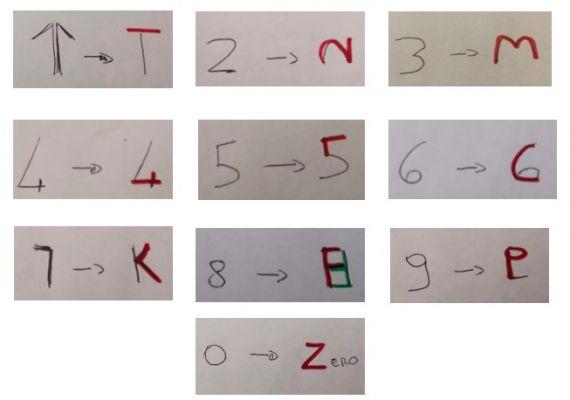
As mentioned, it is a question of finding images within the numbers that lead back to at least one of the respective letters of reference.
As you can see, I have used a number of different strategies.
For the number 1, I doubled it down and mirrored it, getting something very similar to a T.
The numbers 2 e 3 I rotated them to represent N and M respectively.
The numbers 4,5,6,7, are instead designed in such a way as to contain the respective letters of reference, with some more difficulty in the case of 4 (however, in the end, the lowercase "r" is not so difficult to identify).
'S8, I combined two Fs, the second of which is upside down.
Il 9 it becomes a P simply by mirroring it.
It is 0, well, it really starts with Z, so the choice seemed obvious to me.
Now, you can use this pattern as is or even adapt it if you want.
The important thing is that, in order to learn it, you use images and not words, because the images are more immediate and memorable than the sentences with which I explain them.
But let's get to the practice now.
Your first phonetic conversion exercise
We have said that the phonetic conversion takes place through two simple rules:
- # 1 All Voice it doesn't match any numbers, so you don't have to consider them. They are just fillers to build words.
- # 2 Le double consonants they must be considered as a single sound.
So if for example I use the phonetic conversion table for the number 27:
- first of all I identify the two corresponding consonant sounds: Nasal N or Gn and Guttural G, C, or K,
- then I try to build a word with them, inserting vowels. For example I could construct the word GNoCca (remember, doubles don't matter), or NuCa, or aNCa
Let's take an example with two slightly longer numbers:
First Number: 7 3 9 1 4
Corresponding letters: C M P T R
Corresponding word: CoMPuTeR
Second Number: 9 4 1 1 5
Corresponding letters: P R T T L
Corresponding word: Portable
So the sequence 7391494115 that we saw at the beginning of the chapter, and which you have probably already forgotten, can be remembered in simple words "laptop computer".
I believe that the phonetic conversion system is beginning to appear clear to you in all its power.
In fact, when you know how to do the phonetic conversion, you can easily turn numbers into words, and words into images that are easy to remember.
At that point, to remember the original number, just do the reverse, converting the consonants of the word into numbers.
Now, I know what you are thinking:
“Ok Anthony, you did a little trick for me that you prepared! Not all numbers become words like a laptop! "
Part of what you say is true.
It is not always possible to remember a 10-digit number with only two words. Of course you can find a word for any pair of digits, and for almost any triplet.
And it is not uncommon to find words with which to do the phonetic conversion even of 4 and 5 digits.
However, even in the worst case scenario (only conversions of words to groups of 2 digits), a 10-digit number is reduced to 5 little words that can easily be remembered by building mnemonic associations between them.
Images, mental associations, and memory techniques
If you already know something about mnemonics, you certainly know how to use mental associations to link words together.
If not, let's do a quick review before doing the number exercises.
Visual memory
Our brain has one enormous ability to remember images and actions.
In fact for millions of years we have evolved without using verbalization, and even when we started talking, we initially had a very limited vocabulary.
Not to mention writing: it is something that as a species we began to do a few tens of thousands of years ago, and it is no coincidence that the first writings were pictographic.
That is, things were not represented with words formed from the letters of the alphabet, but with drawings.
Think for example of the Neolithic cave paintings, as the typical “hunting tales” (or were they strategic briefings before going hunting?).
In short, man has interacted with the external environment through images for millions of years, and therefore his memory for them is very strong.
To appreciate this, just look at a Facebook image of you and your friends for a few seconds and then look away.
Certainly you are able to remember who the people in the photo were, where you were, what you were doing, how you were dressed, and many other details.
If you were to remember the same information while reading it, a few seconds would not even be enough for you to process the information, let alone remember it!
Using "mental" visual memory to remember
in memory techniques it takes advantage of our innate ability to remember the pictures creating a mental visualization of what we need to remember, and linking each image to the next through spatial actions or relationships.
To explain, I'll give you an example:
You are walking in the mountains and you come to a pond; suddenly you see an albino trout coming out of the pond and leaping towards the sky.
It is something extraordinarily unusual: an albino trout, that is, perfectly white, leaping towards the sky! So an image that you will hardly be able to forget.
But TRoTa aLBiNa CieLo is a triptych of words that represents, with the phonetic conversion, the first 8 decimal digits of P-Greek: 1 4 1 5 9 2 6 5
Those who master phonetic conversion can make these transformations in a very short time, making less effort and gaining a more stable memory than learning by mere repetition.
And the more numbers to remember, the more the advantage of phonetic conversion is accentuated.
How to make correct mental associations
Now, there are two main complications in using this technique:
- you don't really see the picture, it's a creation of your brain. And therefore it doesn't have the same effectiveness. But this is partly true, and only in the beginning. We have indeed a enormous visualization power, and in fact we are the only animals able to create everything we want with our imagination.
- creating so many images you risk forgetting what they refer to! This is also only partly true. And to overcome the problem it is enough to use the technique correctly, distinguishing two phases:
# 1 In the first stage you create the'image-context, that is, the representation of what you have to remember.
For example, if you want to remember the lazy, imagine yourself on the mountain in front of the perfectly round lake, while trying to calculate its area (exercise for which, in the formula, the lazy is used). It is an image unusual, strange, that you will remember easily.
# 2 In the second stage you create the images - memory, that is, those images that carry the information to remember. That is, in the example, TRoTa aLBiNa and CieLo.
The first image - memory (in this case the TROUT) must be firmly associated with the image - context. While the various images - memory successive ones can also be associated with each other, in sequence.
In this way it is very easy to remember even ten / twenty memory images for each image - context, even 40-60 digits can be memorized with this simple method in a very short time.
Now, maybe it seems convoluted, but in fact it is very easy to do, and also very fast after just a few exercises.
Other phonetic conversion exercises
Let's see together some examples of practical application of phonetic conversion, storing the following list of data:
Mont Blanc height: 4.810 meters
Robespierre's death: 1794
Length of the Nile River: 6671 Km
Phonetic conversion for “height of Mont Blanc: 4810 meters "
A good context image could be you on the top of Mont Blanc, with a very long meter in hand, whose tail is lost at the bottom of the valley below you.
It seems to work well, because it pinpoints the info you need to remember very precisely, and is unusual enough to strike your imagination and be remembered even better.
Visualize it well (this is the hard part!), Enriching the image with all the details that make it vivid. Feel the shortness of breath for the altitude, the blinding light of the sun reflecting on the snow, the silence broken only by the sound of the wind, the cold, the white all around you.
Suddenly, almost out of nowhere, a lot of people pop up and you hear a very loud disco music: there is a RaVe party on the top of Mont Blanc!
And the strangest thing is that all those young people climbed to the top of Mont Blanc for a RaVe party carrying a TaZZa in their hands.
RaVe and TaZza identify the height of Mont Blanc: 4810 meters. As always, don't focus on the description I gave you: just as a written description is long and convoluted.
But think if you were really on the top of Mont Blanc enjoying the silence and resting for the fatigue of the ascent, and you really find yourself in the middle of a RaVe party where everyone has a TaZza in hand.
A second of this experience would be enough for you to remember it forever, and remember the height of Mont Blanc together with it.
Converting numbers into words and vice versa is very easy with phonetic conversion.
And your ability to apply phonetic conversion techniques will therefore depend above all on how effectively you will learn to use visualization.
Phonetic conversion for “death of Robespierre: 1794"
As you probably know, Robespierre was guillotined. And therefore a good context image could be you, in the square of the guillotine, while in the middle of the crowd you watch the execution. Imagine then the head of Robespierre that, with a shot of TaCco, is rolled by the executioner towards a BaRa.
He focuses well on the background of the image: the screaming crowd, the gallows with the guillotine, the executioner who with a shot of TaCco sends his head into a BaRa…. How could you forget it?
Phonetic conversion for “length of the Nile: 6671 Km”
You are traveling the Nile with a boat, you have started from the source and you are going towards the mouth.
You know it's the Nile because you see hundreds of Pyramids along the shore.
You are at the stern of the boat, and you are fishing with some very strange lures, it is CeCi.
One is hooked onto your fishing rod, and a whole jar is next to you.
Suddenly, a huge GaTto fish leaps out of the water and eats your jar of chickpeas in one gulp.
Now…
You will agree that if you were really sailing on the Nile, with a two-meter-tall jar of CeCi next to it, and a 300-pound Gatto fish jumping out to eat them, you could never forget it.
And the fact that it is impossible is not a problem at all, on the contrary, it is an advantage. No.
In fact, not only do we remember the images well, we remember them even better if they are strange, absurd, different.
How can you not forget now the length of the River Nile if you transform cecio and cat according to the Leibniz phonetic conversion technique: 6671 km.
In summary: general scheme of the Phonetic Conversion
I think the mechanism should be clear to you by now:
- Create a background that acts as a context for the data to remember (e.g. the white peak of Mont Blanc)
- Connect one or more very defined images to this background. They uniquely indicate the numerical data of reference.
Remembering any number in this way involves four simple rules:
- Create a good one image - context: for example due to the length of the Nile it is essential to add the “touch” of the Pyramids, otherwise you will be confused with other rivers.
- Quickly convert the target number into consonants and then into images
- Connect the first image-memory to the image / context.
- Connect any others images - memory one to the other, in order of appearance of the figures. So, for example, the memory image of the TaCco, which represents the first two digits of Robespierre's death date, is linked to the context-image of the guillotined head of Robespierre. AND the memory-image BaRa, which represents the last two digits, is linked to thememory-image TaCco (it is in fact the heel strike that sends the head into the Bara).
The pattern does not change, whatever type of number you need to remember. Is it a friend's cell phone?
- Create a picture - precise context of your friend
- Convert his phone number into a sequence of pictures - memory
- Attach the memory images to the context image.
Is it your bank PIN?
First, imagine yourself in front of the bank behind your house while you withdraw your cash.
And then attaches to this context image the images - memory relating to the number.
Do you have to learn the numbers of the articles of the code because you study law?
Create an image that reminds you of the title of the article, and ties the image of the issue to it.
And so on.
Conclusions on Leibniz's phonetic conversion
Ultimately therefore, Leibniz's phonetic conversion is nothing but a coding system which allows you to transform abstract and difficult data into images that are easy to remember. And of course it also allows you to do the reverse.
Also, when you think about it, the phonetic conversion is very simple! There are only 10 basic digits (including zero), which correspond to ten consonant sounds to learn.
You convert them into words and you visualize those words well. If there is more than one, you connect them to each other through simple associations. That's all!
In this way, something as difficult as memorizing numbers becomes very easy.
For this reason, as mentioned at the beginning of the article, the value of phonetic conversion goes far beyond its practical utility in memorizing numbers.
In fact, it also becomes a paradigmatic example:
- of the enormous possibilities - which we do not always exploit - of our brain
- the capacity for improvement inherent in each of us
A greeting. Anthony





